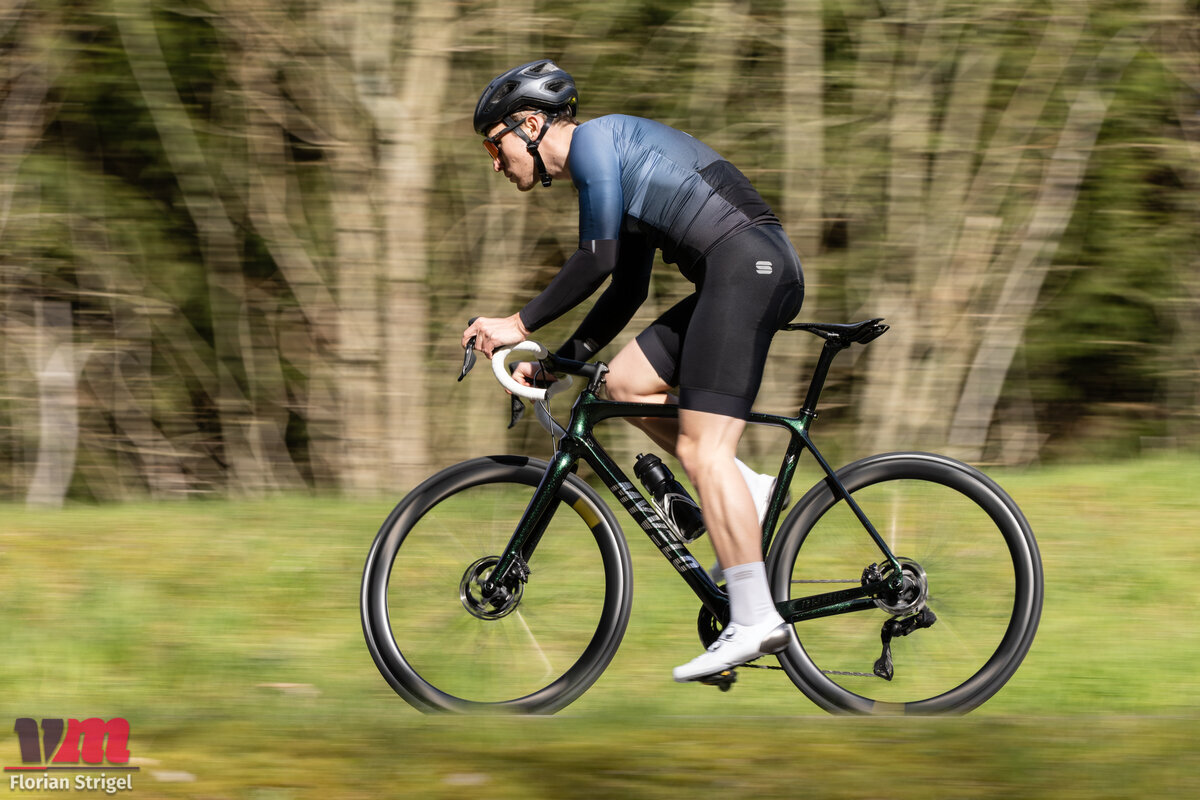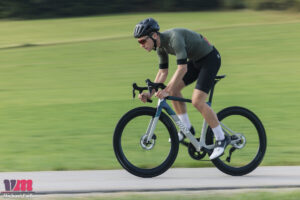MyVelo Tourmalet im Test: Der Col du Tourmalet zählt mit seinen 2.115 Metern über dem Meeresspiegel zu den legendärsten Anstiegen bei der Tour de France. In diesem Jahr brachte die 6. Etappe über eben diesen Anstieg in den Pyrenäen bereits eine Vorentscheidung auf den Gesamtsieg, denn der spätere Sieger Jonas Vingegaard gab von dort an sein gelbes Trikot bis Paris nicht mehr her. Für den deutschen Hersteller MyVelo war während der Entwicklungsarbeiten ihres Bergrades schnell klar, dass der Name bei diesem Rad Programm sein wird. Wir haben das MyVelo Tourmalet eingehend getestet und für euch herausgefunden, wie sich das Leichtgewicht so verhält.
Für Radsportfans gibt es wenig schöneres als die Pässe der Tour de France zu erklimmen und die Strecken hautnah zu erleben. Diese beinharten Kletterpartien bedürfen akribischer Vorbereitung und passender Unterstützung durch das Material. Mit dem MyVelo Tourmalet bietet der Hersteller aus dem Schwarzwald ein Rad, das speziell für die härtesten Anstiege gemacht ist.
Wenn man über Rennräder spricht, wird meist nach kürzester Zeit auch das Thema Gewicht angesprochen. Allerdings ist ein niedriges Gewicht alleine nicht zwangsläufig für die optimale Performance am Berg ausschlaggebend. Denn auch das Thema Kraftübertragung spielt eine entscheidende Rolle, um die Power überhaupt auf die Straße zu bekommen und den Höhenmetern den Kampf ansagen zu können. Genau aus diesem Grund hat man bei der Entwicklung des MyVelo Tourmalet besonders auf die Rahmenform und das hochwertige Carbon-Layup geachtet, denn wie so oft ist zu viel Steifigkeit auch wieder negativ, da der Komfort in Mitleidenschaft gezogen wird. Hier bietet das Tourmalet eine gekonnte Mischung und brachte uns bereits ab den ersten Metern viel Freude – besonders wenn es steil wurde.
Das MyVelo Tourmalet im Test
Aber nochmal der Reihe nach – Unser MyVelo Tourmalet Testbike kam mit der aktuellsten Shimano Dura-Ace Di2 Schaltgruppe mit 2×12 Gängen für bestes „Semi-Wireless“-Schaltvergnügen und Mavic Carbon Laufrädern und brachte so gute 7 Kilo auf die Waage.
Der Lenker und Vorbau von Ritchey wirken auf den ersten Blick ungewohnt, da leider keine interne Zugführung möglich ist und so keine 100% cleane Optik gegeben ist, allerdings liegt der Lenker super in der Hand und bietet sowohl bergauf als auch bergab die richtige Plattform, um sich wohl und sicher zu fühlen.
Für einen Hingucker sorgte bei uns in der Redaktion definitiv der Carbonsattel, welcher natürlich extrem hart aber mit dem passenden Sitzpolster doch erstaunlich komfortabel ist.
Ein großer Nachteil bei vielen Rennrädern für die Berge ist häufig das Handling und Abfahrtsverhalten, nicht aber beim MyVelo Tourmalet. Auch wenn sich das Rad sehr direkt fährt und aggressiv reagiert, so hält es dennoch treu die Spur und bleibt präzise auf Kurs. Wer es allerdings zu flott angeht, muss teils heftig in die Eisen gehen, denn durch das sportive Setup werden größere Fahrfehler nur wenig verziehen.
Ein paar kleinere Abstriche gibts beim Tourmalet für den Gesamtkomfort. Da es sich hier um ein ziemlich sportliches Rennrad handelt ist dieses natürlich durch die Steifigkeit geprägt und steckt unruhigere Streckenführungen und Unebenheiten nur bedingt weg.
MyVelo Tourmalet individuel ausstatten
Das MyVelo Tourmalet kann auf der Website mit passenden Laufrädern, Sattel und weiterer Ausstattung an die individuellen Bedürfnisse angepasst werden.
Das MyVelo Verona haben wir auch schon getestet, hier gehts direkt zum Test:


















Schreibe einen Kommentar